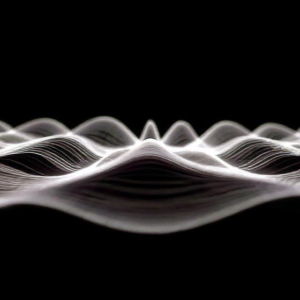1. Interference
Interference happens when two or more waves (like light or sound) meet and interact with each other. The way they interact can either amplify the wave (constructive interference) or cancel it out (destructive interference).

Simple Example:
Imagine you have two pebbles and you drop them into a pond at the same time. Each pebble creates ripples (waves) on the water. When these ripples meet, they can either:
- Add together to create bigger waves (constructive interference).
- Cancel each other out if the waves are in opposite directions (destructive interference).
In light waves, interference happens in a similar way:
- Constructive interference: Light waves add together, creating a brighter spot.
- Destructive interference: Light waves cancel each other out, creating a darker spot.
This principle is used in many technologies like noise-canceling headphones and thin film coatings (like on soap bubbles).
2. Diffraction
Diffraction occurs when a wave encounters an obstacle or a slit and bends around it. It’s most noticeable when the size of the obstacle or slit is similar to the wavelength of the wave.
Simple Example:
Imagine you throw a stone into a pond and watch the waves spread out. If you put a small object (like a rock or stick) in the path of the waves, you’ll see the waves bend around it. That bending is diffraction.
For light, diffraction happens when light passes through a small opening or around the edge of an object. Instead of traveling straight, it spreads out and creates patterns of light and dark bands.
Why is Diffraction Important?
- It helps explain phenomena like the rainbow patterns created by a CD or DVD surface.
- It’s also essential in understanding how microscopes and telescopes work.
3. Polarization
Polarization is when the vibrations of a wave (especially light) happen in only one direction. Normally, light waves vibrate in many directions, but polarization restricts them to a single plane or direction.
Simple Example:
Imagine you’re holding a rope. If you wiggle the rope up and down, the wave moves in a vertical direction. But if you twist the rope side to side, the wave moves horizontally. In the same way, light can vibrate in different directions.
- Unpolarized light: Light that vibrates in many directions.
- Polarized light: Light that vibrates in just one direction.
How Polarization Works:
- A polarizing filter can block certain directions of light, allowing only light vibrating in one direction to pass through.
Everyday Example:
- Sunglasses: Polarized sunglasses block out the glare from the sun reflecting off flat surfaces (like water or roads) because the reflected light is usually polarized. The lenses filter out the horizontal vibrations, reducing glare.
Summary of Key Concepts
- Interference: When two waves meet, they can either amplify each other (constructive interference) or cancel each other out (destructive interference).
- Diffraction: The bending and spreading of waves when they pass through a small opening or around an obstacle.
- Polarization: Restricting the vibrations of light to just one direction, which can be controlled with filters.
These concepts explain many natural phenomena, from the color of the sky to how we see rainbows, and they play a huge role in technologies like optics, sound engineering, and communication systems.











